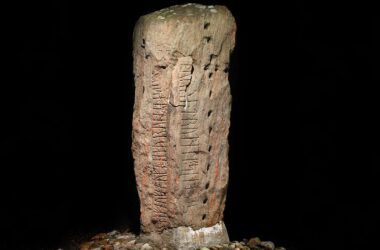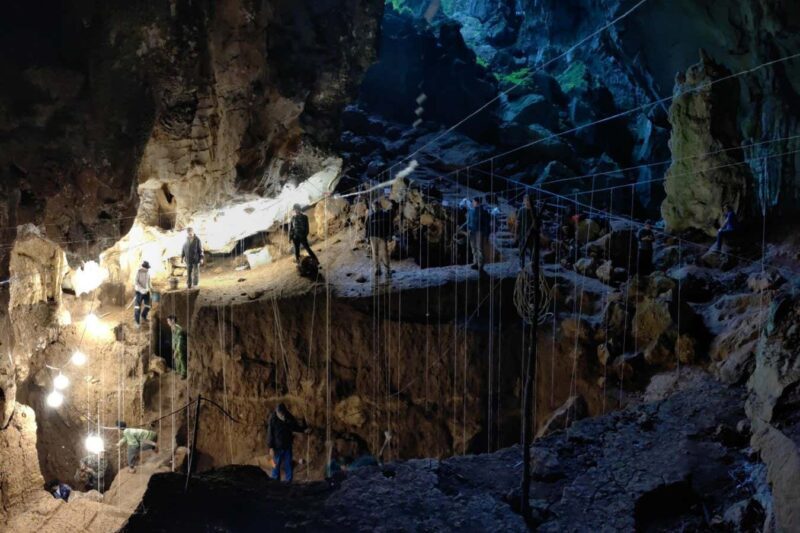Tam Pà Ling cave in northern Laos, where several human fossils dating back tens of thousands of years have been found
Fabrice Demeter
The oldest remains of modern people in mainland Southeast Asia were discovered in a cave in Laos. Bones belonging to Homo sapiens have been discovered that might date back 86,000 years. This discovery provides fresh information about our ancestors’ journey from Africa to Asia.
Several modern human fossils, with estimated ages ranging from 46,000 to 70,000 years old, have been discovered in the cave of Tam Pà Ling in northeast Laos since 2009. A new addition of two fossils has been made by Fabrice Demeter and his colleagues at the University of Copenhagen in Denmark.
“One of my Laos colleagues saw what we thought was a big piece of stone,” Demeter explains. When we took it out of the way, I saw that it was white. I realised it was a bone fragment at that point. Upon further examination, the fossil was discovered to be a little piece of a human cranium. A fragment of a human tibia (shinbone) was also discovered by the researchers.
The fossils were dated to be between 68,000 and 86,000 years old by radioactive isotopes found in the silt around them in the cave. “This is the first time we’ve got such old specimens in mainland South-East Asia,” adds Demeter.
The results of this study provide evidence that modern humans arrived in Southeast Asia earlier than was previously believed. Humans left Africa and began populating other parts of the world, including Asia, at some point about 50,000 years ago, according to previous estimations. Except for Indigenous Australians, whose ancestors may have departed Africa much earlier than this, nearly everyone alive now is descended from these primitive humans.
“Since we now have fossils that go back closer to 80,000 years,” adds co-author Laura Shackelford of the University of Illinois at Urbana-Champaign.
She claims that genetic evidence shows that most previous migrations failed. There is a possibility that the fossils unearthed in Tam Pà Ling belonged to the ancestors of Indigenous Australians, whose bones have been found in Australia dating back considerably earlier than 50,000 years ago. Demeter believes this area need further study.
“One of the most debated topics in palaeoanthropology today continues to be modern human origins,” says Christopher J. Bae of the University of Hawai’i at Manoa. To to the author of the research: “This particular study shows quite clearly that modern humans were in the region earlier than originally supposed.”
Q2: How were the fossils in the cave dated?
A2: Radioactive isotopes found in the silt surrounding the fossils were used to determine their estimated age, ranging between 68,000 and 86,000 years old.
Q3: How does this finding change previous estimations of human migrations?
A3: The study suggests that modern humans arrived in Southeast Asia earlier than previously believed, challenging previous estimates of human migration from Africa to Asia.
Q4: What do the findings imply about Indigenous Australians’ ancestry?
A4: The fossils in Tam Pà Ling may belong to the ancestors of Indigenous Australians, whose lineage has been traced back considerably earlier than 50,000 years ago.
Q5: Why is this discovery significant in paleoanthropology?
A5: The study provides critical evidence of early human presence in mainland Southeast Asia and contributes to ongoing debates about modern human origins and migration patterns.







